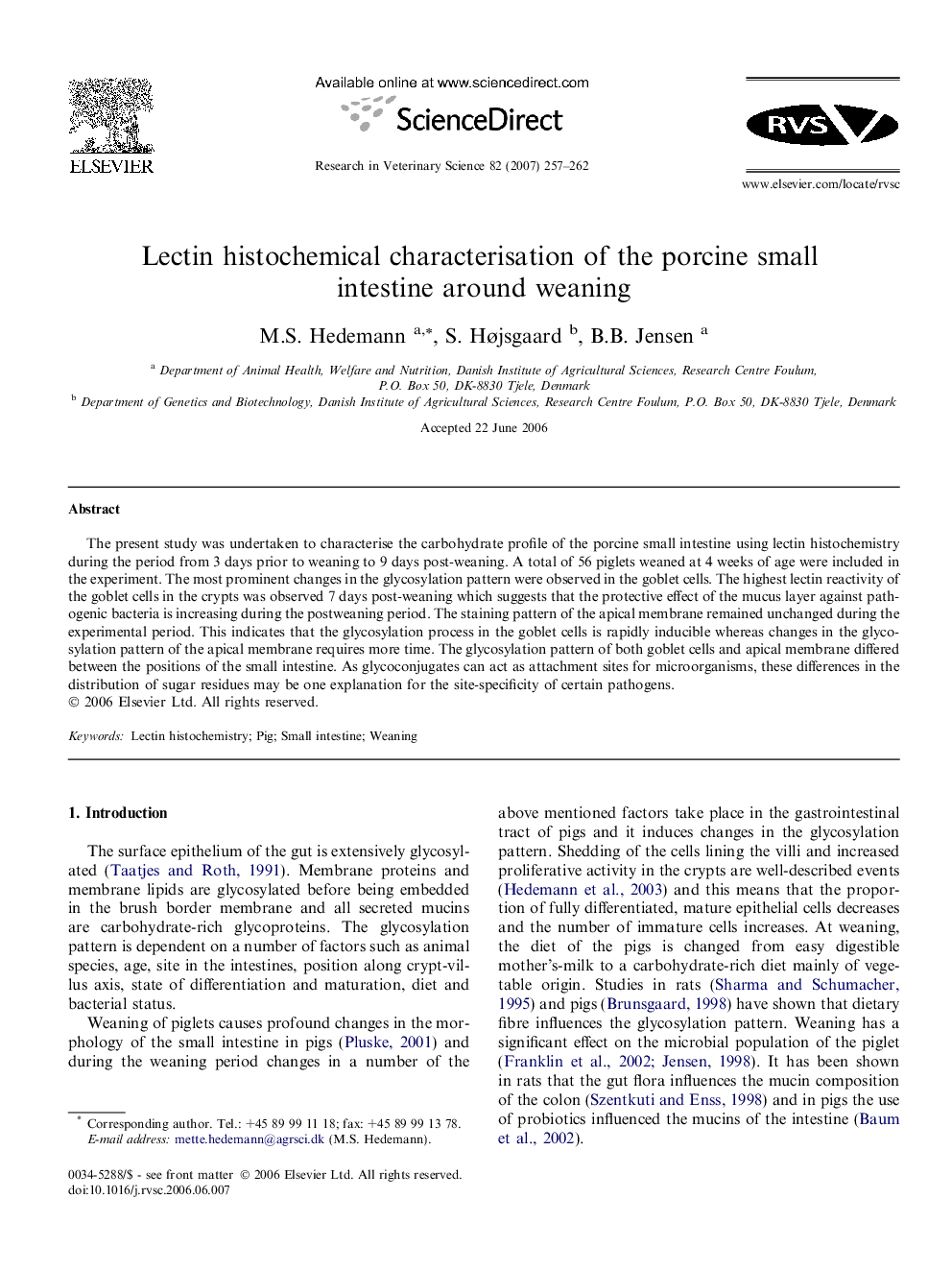| Article ID | Journal | Published Year | Pages | File Type |
|---|---|---|---|---|
| 2456373 | Research in Veterinary Science | 2007 | 6 Pages |
The present study was undertaken to characterise the carbohydrate profile of the porcine small intestine using lectin histochemistry during the period from 3 days prior to weaning to 9 days post-weaning. A total of 56 piglets weaned at 4 weeks of age were included in the experiment. The most prominent changes in the glycosylation pattern were observed in the goblet cells. The highest lectin reactivity of the goblet cells in the crypts was observed 7 days post-weaning which suggests that the protective effect of the mucus layer against pathogenic bacteria is increasing during the postweaning period. The staining pattern of the apical membrane remained unchanged during the experimental period. This indicates that the glycosylation process in the goblet cells is rapidly inducible whereas changes in the glycosylation pattern of the apical membrane requires more time. The glycosylation pattern of both goblet cells and apical membrane differed between the positions of the small intestine. As glycoconjugates can act as attachment sites for microorganisms, these differences in the distribution of sugar residues may be one explanation for the site-specificity of certain pathogens.
